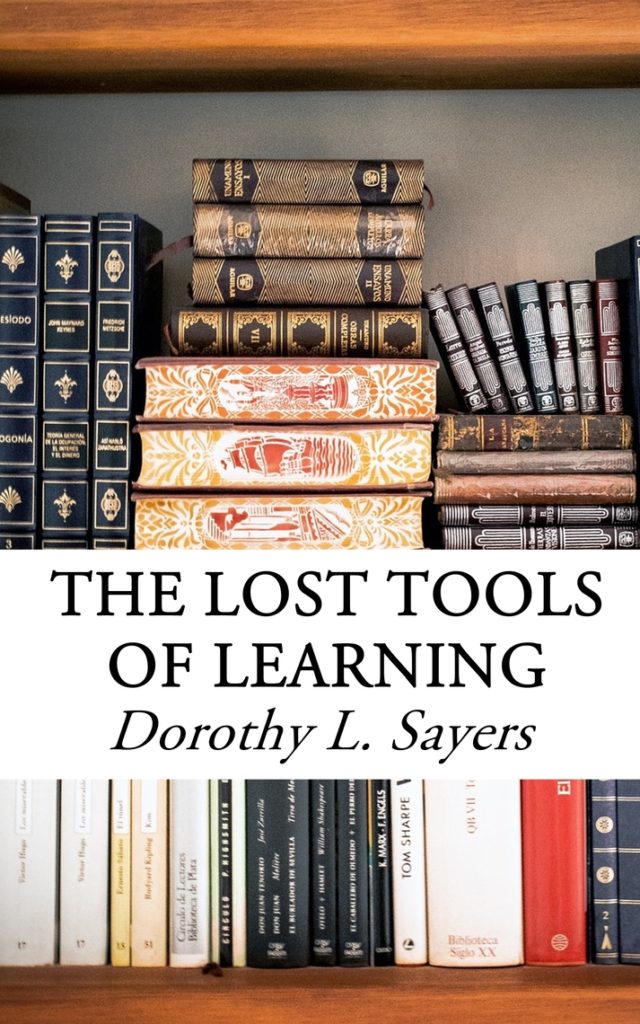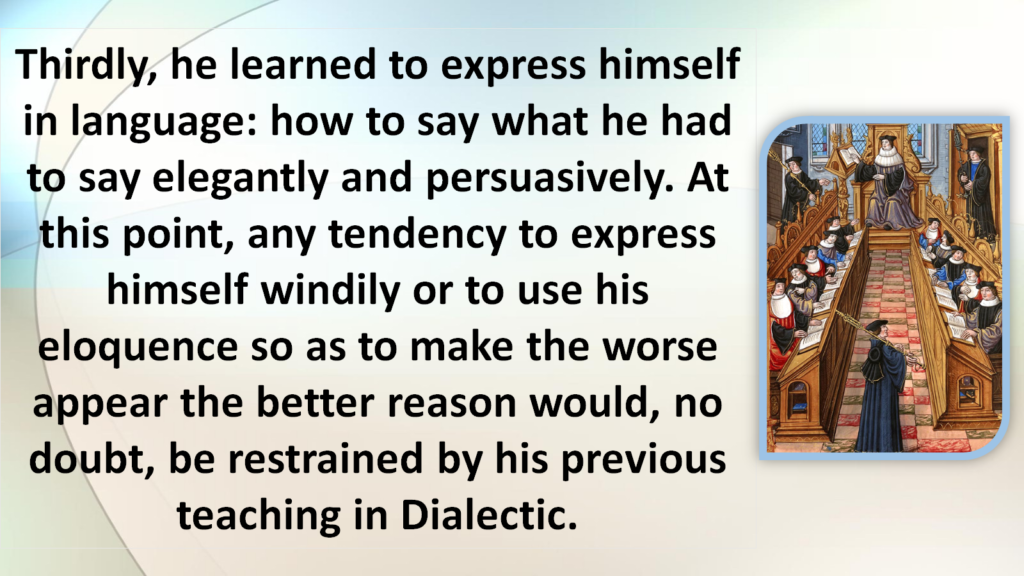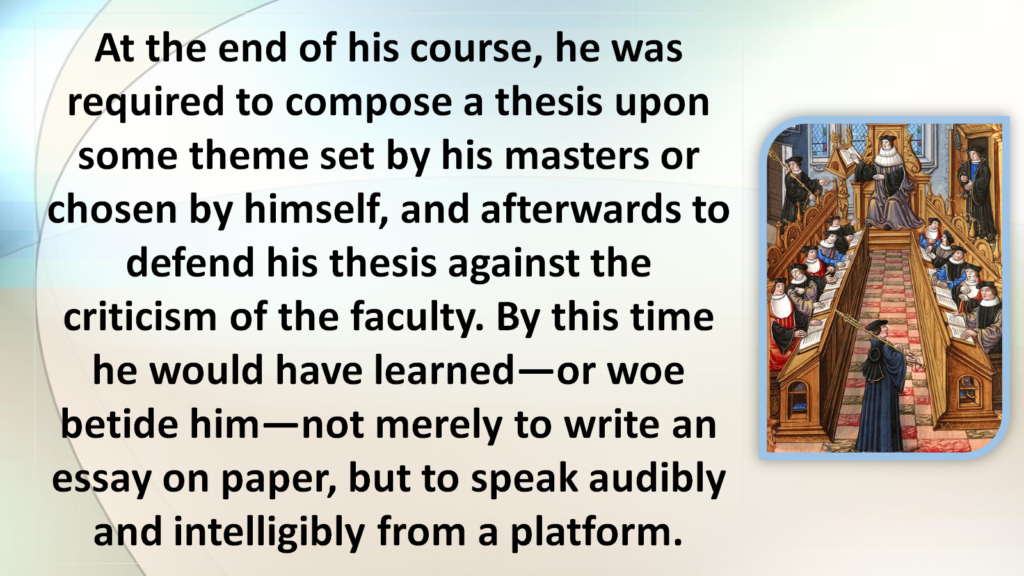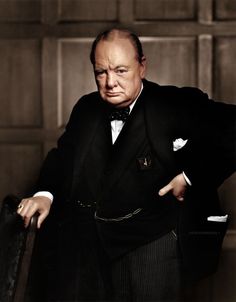Whenever I finish one writing project, a new one seems to pop up in my mind. Now that my recently published book, Many Times & Many Places: C. S. Lewis & the Value of History, has been introduced to the public (and many thanks to those who have dipped their literary toes into it), I am now researching something else related to Lewis that interests me. It has to do with a comparison of Lewis with Dorothy L. Sayers, who is my second-most-favorite British author.
When I was at the Marion E. Wade Center last month to speak about my latest book, I took time to delve into some of Sayers’s manuscripts—those documents that have not been published—to see what I could find about her thoughts on education. The thesis brewing in my own thoughts is a comparison of her ideas for education compared with Lewis’s. I expect they will coincide on many points, but I would like a more comprehensive overview for their philosophies of education.
Sayers’s well-known essay, “The Lost Tools of Learning,” is my starting point for the research. In it, she took modern educational theories to task and led the reader back into the medieval world for insights on the subject. Now, many would immediately dismiss a “regression,” as they would call it, to a world they consider more backward than our own. But they don’t really understand what it is they are opposing.
Sayers reminds us that medieval education was comprised of three parts that preceded tackling specific subjects. Those “tools of learning,” which prepared students for engaging with those subjects, were Grammar, Dialectic, and Rhetoric, in that order.
Grammar meant learning the language—the structure of language—what it was, how it was put together, and how it worked. Dialectic was how to use the language: how to define terms and make accurate statements; how to construct an argument and how to detect fallacies in argument. It embraced Logic and Disputation. The final stage was Rhetoric.
My Wade Center research turned up a lot of fascinating documents, but one, in particular, is related to that issue of Rhetoric—the third stage of learning tools. The specific manuscript I am focusing on is called “The Revival of Learning,” a talk Sayers gave to a poetry society. The title is not precisely accurate, as throughout the talk, she calls her subject “The Revival of Rhetoric.”
The cornerstone for this address was the example of Winston Churchill, a leader that Sayers believed had rejuvenated the impact of effective rhetoric. She comments, “At the beginning of the last war, an extraordinary wave of excitement & vivification ran through the nation when Mr. Churchill began to speak on the wireless.”
Sayers adds, “It was not so much what he said—though that was heartening & good—as the way he said it, which was electrical. Events (which were agitating enough) helped of course to put us into the mood to be moved; but at first events were so depressing that if they had been talked about in the old way we should probably have sunk into a lethargy of discouragement.”
Throughout the war, Sayers notes, “that resonant voice trumpeted its way through bad times & good.” Even people who weren’t fans of Churchill or his politics were stirred by the rhetoric of his famous speeches in those dire times. They “drank in great lifesaving draughts of stimulating language with body in it. That marked, I believe, the first steps in the Revival of Rhetoric.”
Hearkening back to her “Lost Tools of Learning,” she bemoans the “bad press” that the skill of rhetoric was receiving in modern Britain. What followed was a history lesson:
To the Ancients, & throughout the Middle Ages, & indeed right through the Renaissance & the Eighteenth Century, Rhetoric was a thing to be held in honour. It was “the art of persuading in speech,” & to do it beautifully was thought to be a good thing. But of late years, a curious superstition grew up—first that persuasion was rather wicked—we called it by the bad name of “propaganda.”
Secondly, that if any persuading had to be done, it was best done in the dullest & ugliest way possible—in the unimaginative jargon of commerce, or the platitudinous verbiage of the cheap press, or the uncouth language of the “plain, blunt man” who “says what he means,” & in whom rudeness & an inability to construct his sentences pass for sincerity.
I don’t mind confessing that, when reading those words on the page of that manuscript for the first time, a kind of thrill shot up my back and enlivened my mind. Yes, it is important not only what we say, and that we say it accurately (which is also a problem in our day), but that we say it in such a way as to stimulate and inspire the thoughts of our listeners.
What I share today is only one small part of what I discovered in the Sayers manuscripts. That’s enough for today, but I plan to share other highlights in future posts. I look forward to this new endeavor as I attempt to trace the educational beliefs of both Sayers and Lewis. Even if it never results in another book, it will, at the very least, enrich my own understanding.





